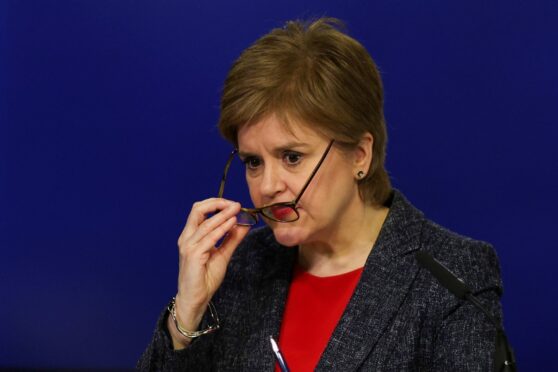
New Year and a new constitutional battle. This is how it rolls in Scottish politics. And frankly, it suits both the SNP at Holyrood and the Tories at Westminster.
It keeps them both in a job, throws red meat to their base, and creates a convenient distraction from the real-life troubles both face in government.
But this argument between Holyrood and Westminster feels different. It is, after all, the first time the UK Government has deployed what is being described as the “nuclear option” – invoking Section 35 of the Scotland Act – to thwart a piece of legislation that has been passed by Holyrood but which the Secretary of State believes could impact UK laws.
And crucially for the intensity of the current row, the focus of the law in question has been one of the most divisive of our times. The Gender Recognition Reform Bill which would allow for a marginalised, minority – trans people – to change their legal sex by self-identification.
It is that additional emotive, and highly contested layer which throws shade on whether the true motivations of the UK Government are driven more by political ideology than by legal compliance.
And however much Nicola Sturgeon may resent it and cry “democracy denial”, it is by dint of democracy, that Scotland is not now an independent nation and far from Alister Jack launching what she has called a “full frontal attack” on devolution, it is the Scottish Government that is likely to be tested on whether it has played by the rules.
It was clear all through this whole cack-handed process, riddled as it was, by closed minds and confirmation bias, that there was a risk that this bill was going to conflict with reserved laws. That was at the heart of what women critical of the bill had been saying for years while their concerns were dismissed by the first minister as “not valid”.
UN expert backs gender recognition reforms being considered in Scotland
However, it was also repeatedly raised by the statutory regulator, the Equalities and Human Rights Commission, which was at best, regarded with suspicion at Holyrood and latterly by the UK Government’s women and equalities minister, Kemi Badenoch, who met with Scottish Government ministers just days before the bill was passed before being shooed away as having no agency here. So, to say, as the first minister has, that these issues came from nowhere, is nonsense.
For many women on the left, including independence supporters, who do not fully support the notion of self-ID, it is an anathema to be welcoming the intervention of a Tory secretary of state in thwarting legislation home-grown in Scotland but his reasons behind a Section 35 seemed reasoned and true to both the spirit of devolution and its legal underpinnings. Those reasons may be hard to legally challenge.
The door is, of course, open to the Scottish Government to revisit the bill, bring it back to parliament amended, and legislate for reform they promised.
Cynically though, it is now 18 months since the Supreme Court ruled against the Scottish Government’s attempts to incorporate the United Nations Conventions on the Rights of the Child into Scottish law because, as it stood, it would impact on UK-wide legislation.
The first minister was duly outraged and claimed it left her without the full powers to protect children’s rights. A year and a half later, there is no amended bill, leaving children still waiting and campaigners increasingly angry.
And so, in the case of the Gender Recognition Reform Bill, it is perhaps little wonder that for some the acronym has simply morphed into an expression of their frustration, GRR…
Mandy Rhodes is Editor of Holyrood magazine www.holyrood.com, follow on twitter @holyroodmandy

Enjoy the convenience of having The Sunday Post delivered as a digital ePaper straight to your smartphone, tablet or computer.
Subscribe for only £5.49 a month and enjoy all the benefits of the printed paper as a digital replica.
Subscribe